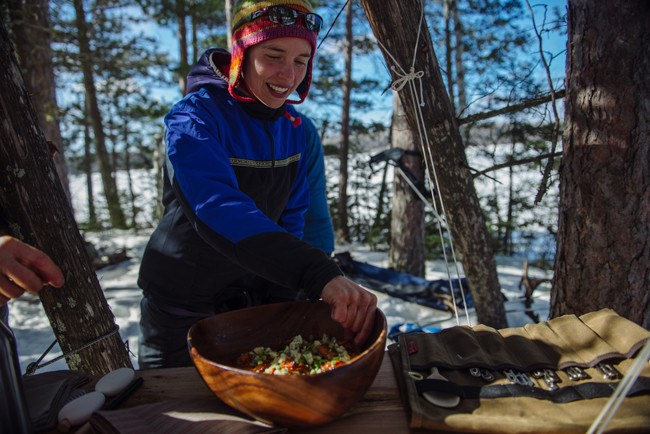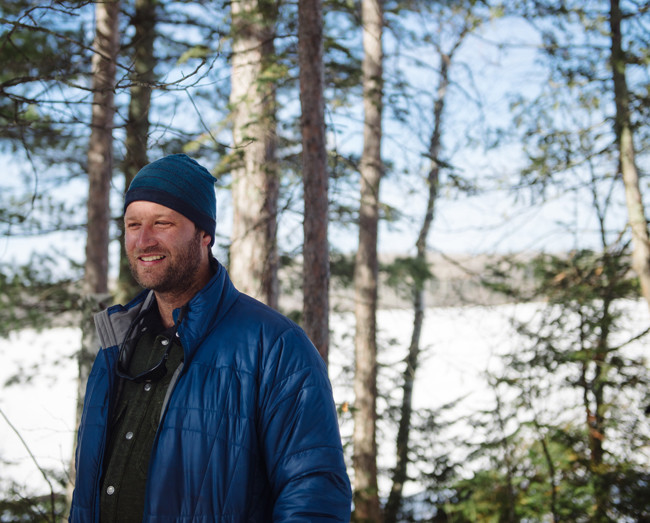
This story is sponsored by the Campaign to Save the Boundary Waters.
By Dave Freeman
When Amy and I depart on September 23 to spend a year in the Boundary Waters Canoe Area Wilderness, we will leave with enough food for two people for two weeks. Then we will be met by a resupply team bringing out our next batch of food. These resupplies will happen every two weeks or so.
While it might sound crazy to you that we will be spending A Year in the Wilderness, we are used to camping in all seasons and challenging ourselves in the wilderness. Plus, we are doing this for a cause that’s close to our hearts, protecting the Boundary Waters from proposed sulfide-ore copper mining (which you can learn more about from the Campaign to Save the Boundary Waters).
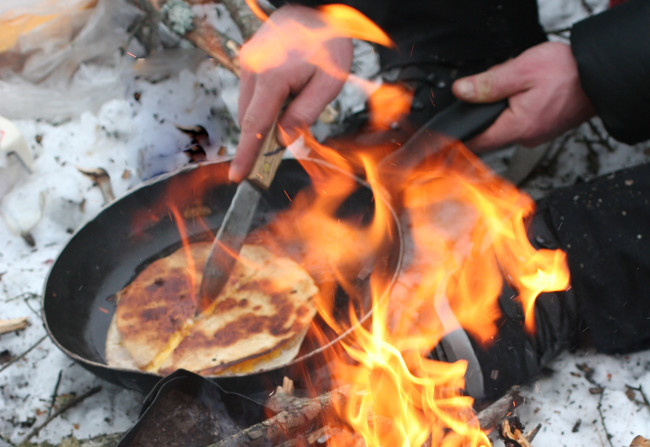
Last year, when we took off on the Paddle to DC, our 101-day trip from Ely, Minn. to Washington, D.C., by canoe and sailboat, we had to plan our meals only a few days in advance, and we strolled the grocery store aisle at least once a week. On that trip we were able to carry lots of fresh foods with us, and our meals were very similar to what we would normally eat at home.
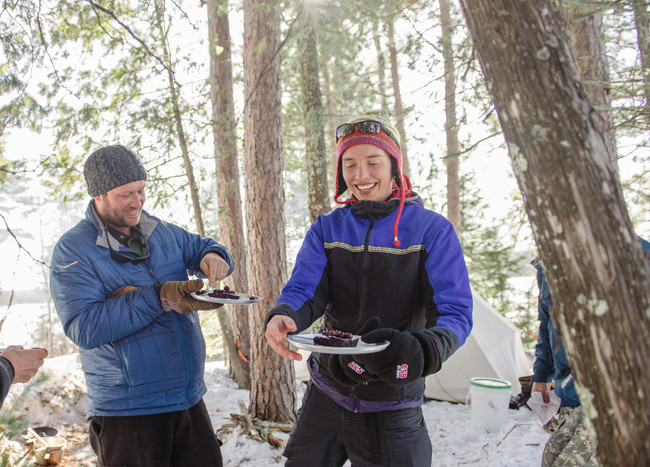
This time, we need to have our meals preplanned so that the resupply teams know what to bring. It’s not often you can predict ahead of time what you’ll have for dinner three months from now, but we will. Our meals will change based on the seasons — we’re gonna want a lot of hot soup and plenty of calorie-dense foods in December to help us stay warm. In the winter we will need to eat about 5,500 calories each day because of the extreme cold and large amounts of exercise in our daily routine. That means we get to add an extra dollop of peanut butter to our oatmeal, slather ridiculous amounts of butter onto steaming hunks of cornbread, and consider bacon one of the major food groups all winter long.
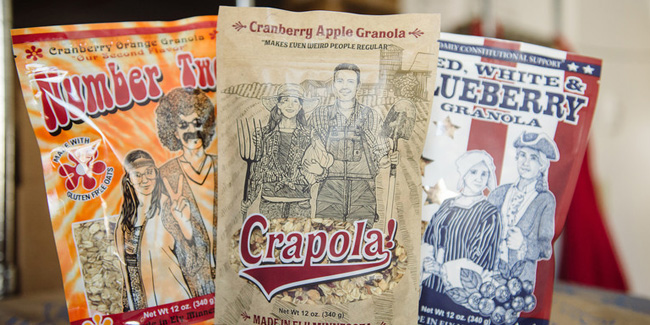
When out in the wild, we typically keep our meals simple and try to eat mostly whole, unprocessed foods. Our breakfast usually consists of oatmeal with dried fruit, a splash of honey or maple syrup, and some peanut butter and powdered milk to add protein and fat. We also eat a lot of granola for breakfast. Crapola is our favorite, and we love that it is made by our friends right here in Ely!
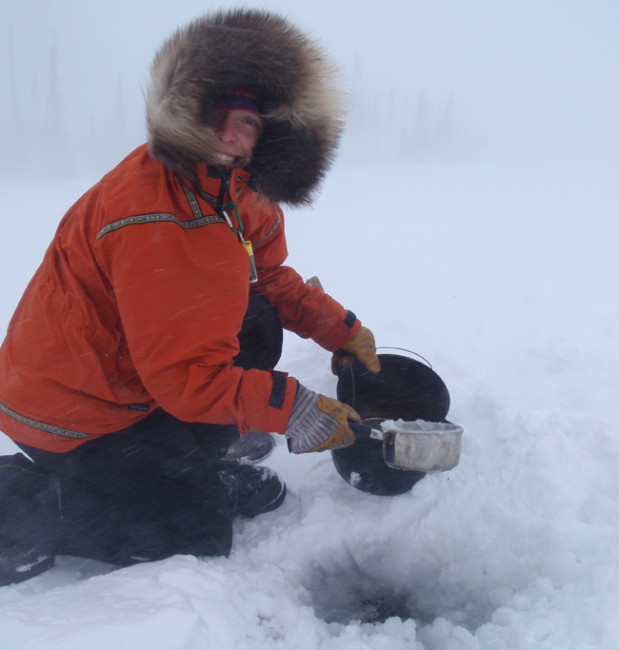
Lunch is usually a grab-and-go affair: trail mix, energy bars, summer sausage and cheese rolled up in a tortilla or on crackers. In the winter we like to make a thermos of soup in the morning so that we can have something hot to eat during our lunch break.
At night we eat a lot of brown rice, wild rice, dried beans, lentils, and whole grain pasta — our staples. Right now, we are busy drying mountains of veggies from the Northern Delicious Farm, which we will add to our dinners throughout the year. We love to make gado gado, pizza, cornbread, cakes, and more involved things as a special treat. Most of the time, a steaming bowl of rice and beans with a few spices and rehydrated veggies from our local CSA is simple, nutritious, light weight, relatively environmentally friendly, and easy to prepare and eat. Plus, food just tastes better when you are out in the wilderness, so a simple meal is all we need to keep our taste buds happy most of the time.
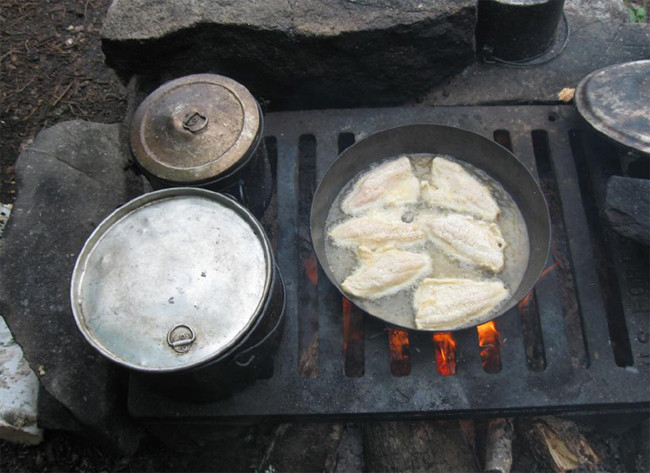
Another nice thing about the Boundary Waters is that you can find many different kinds of fish and there is a variety of ways to prepare them. One of our favorite dishes is grilled whole lake trout. It is easy to prepare and tastes delicious. It works best with smaller fish (1 to 2 pounds) After removing the head and guts, wash the fish, and rub the whole fish in olive oil. Then sprinkle sea salt and pepper into the cavity, adding minced garlic, and a couple slices of lemon and onion if you can. Sometimes we use dried onion flakes and lemon juice if we don’t have fresh onions and lemons. Then just place the fish on the fire grate over a low flame, and cook until the skin is crisp and the meat is flaky, flipping the fish once. When the fish is done, the skin will peel off, and the meat will be easy to pull off the rib cage with a fork.
The most fun part of our meal planning for A Year in the Wilderness is coming up with some fun treats and ways to mix it up over the course of 365 days. We’re taking inspiration from past trips and from friends who cook well in the wild and plan more elaborate meals. A few winters ago, we spent three months dog sledding across northern Canada with our friends Ellen Root and Van Conrad. They taught us to bake cornbread, chocolate cake, cinnamon rolls, pizzas, and just about anything you would bake in your oven at home using a frying pan and a portable woodstove. We will also use our Fry-Bake to bake cakes and other treats over an open fire during the summer.
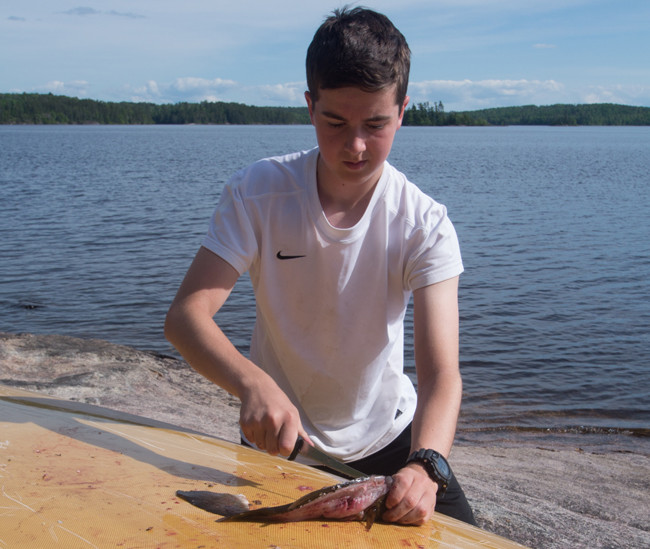
One thing I’m already looking forward to is fresh walleye. On a recent canoe trip, we caught a lot of fish, and each night I would fillet a few that we kept for dinner. I’d coat them in breading, and drop them into a sizzling pan until they were golden brown and serve them to a group of four trout fishermen from Idaho and Montana who were blown away by fresh walleye. It was amazing.
Most winters we lead dog sledding trips for Wintergreen Lodge and chef Ted L’Allier makes a great smoked trout dip, which is the perfect treat to spread on crackers or a toasted bagel after a day of dogsledding. We are planning to net and smoke some of our own whitefish this fall and hope we can replicate L’Allier’s smoked fish dip as a special treat with some of our smoked whitefish as part of our Thanksgiving feast.
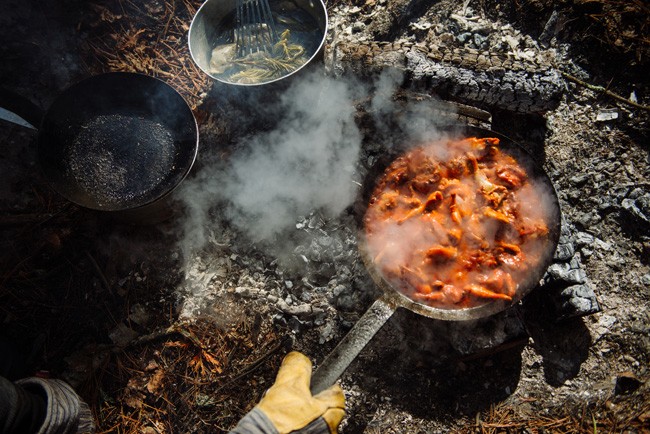
Last spring, we joined the Heavy Table’s James Norton along with J.D. Fratzke of The Strip Club for a mighty meal in the Boundary Waters, on Fall Lake. They cooked up some amazing dishes, such as mini buffalo wings made from quail legs and served with Caves of Faribault blue cheese. They were tangy and tender, and contained the perfect amount of spice to warm us up on a cold winter day. We hope to have the occasional chef or inspired guest cook us up a fun meal on the way, too.
So while dining for a year in the wild might sound ambitious, we’ll be leaning on years of experience and the expertise of others to make it an amazing culinary experience. We’re doing this all in support of protecting the wilderness we love. If you want to follow along on our adventure, follow @SavetheBWCA or @FreemanExplore on Twitter, and visit the Campaign’s blog. We’ll be sharing stories all year long. And if you want to help bring food out to A Year in the Wilderness, sign up to join a resupply.
